43 F. high temperature yesterday in St. Cloud.
28 F. average high on February 20.
23 F. high on February 25, 2015.
Trace of snow on the ground at KSTC.
February 21, 1965: Strong winds occur, reaching speeds of up to 45 mph in the Twin Cities.
 Winter on Training Wheels - Mild Bias ContinuesOn Friday
Winter on Training Wheels - Mild Bias ContinuesOn Friday
snow cover at MSP International Airport shrank to a trace. 45 degrees
and a third of an inch of rain had something to do with that. According
to the National Weather Service that was the end of 56 straight days
with at least an inch of snow on the ground. During an average winter an
inch or more of snow is on the ground for 90.3 days, based on NOAA data
from 1981-2010.
No, it wasn't a "tough winter".
30 inches
so far this winter at MSP - we'll see more snow in March, but a higher
sun angle and thawing temperatures mean a wetter, sloppier snow with
rapid melting.
Wave at the big, moisture-laden storms passing well
south of Minnesota this week; more echoes of El Nino. Daytime highs
climb to near freezing all week; 40F
next Saturday before a
Sunday
clipper drops an inch or two of slush. We could see 1-2 days in the
teens early next week before another rapid thaw. The model solutions for
early March look like something I'd expect to see in mid-April. Expect a
mild bias to continue.
Meanwhile the strongest cyclone on record in the southern hemisphere just hit Fiji.
 Average Snow Cover in the Twin Cities
Average Snow Cover in the Twin Cities. 90 days a year with at least 1" or more on the ground? Here's an excerpt from
Current Results: "
For
nearly all of winter along with some of early spring and late fall,
Minneapolis has at least an inch of snow on the ground. A snowpack that
gets to ten or more inches deep can cover the city anytime from November
to April. The snow accumulates most during December, January and
February. Typically, on six or seven days in January and in February
plus another five days in December, the snow depth in Minneapolis tops
ten inches..."
Tuesday Slush?
Flurries are possible today; maybe an inch or two of flurries Tuesday
as an upper air disturbance passes overhead. It may be just mild enough
for a rain-snow mix; with temperatures in the 30s roads should be mainly
wet. 84-hour snowfall forecast from NOAA's NAM model: AerisWeather.
Trending Above Average.
I'm starting to sound like a broken record (skipping CD?) Grandpa,
what's a CD? OK, my streaming audio is wonky. Temperatures run well
above average this week, European guidance hinting at mid-40s one week
from today. Any blows of arctic air will be of the glancing variety.
More Early April than Early March.
If the 2-week 500 mb wind forecast (GFS) comes close to verifying
spring may come extra-early; long range models hinting at 40s, even a
shot at 50F the first week of March. Now that we've lost most of our
snow cover more of the sun's energy can go into heating up the air. More
spasms of winter are likely, but at the rate we're going Minnesotans
may be feverish sooner than they thought possible.
 Every State's Temperature Trend for Every Season
Every State's Temperature Trend for Every Season.
Yes, Minnesota is warming, especially during the winter months, in fact
no other state is warming faster. Here's an excerpt from
Climate Central: "..
.If
you look at all four seasons across all of the Lower 48 states — for a
grand total of 192 state-season combinations — there are only three
instances of cooling. The Dakotas and Iowa are cooling ever so slightly
in summer. Otherwise, there’s only one direction temperatures have gone:
up. Snow cover in particular plays a role in why winters are heating up
so fast from Montana to North Carolina. Or more specifically, it’s a
lack thereof. As temperatures rise, snow is decreasing — and in many
cases being replaced by rain. Replacing light snow with dark ground means more of the sun’s energy is absorbed leading to a faster increase in warming..."
 Decadal Warming Rate
Decadal Warming Rate. Map above courtesy of
WXshift.
Warmer Than Normal Spring Shaping Up for Minnesota? So says NOAA CPC; Dr. Mark Seeley has more perspective in this week's installment of
Minnesota WeatherTalk: "
The NOAA Climate Prediction Center
released new seasonal outlooks on Thursday of this week (Feb 18). The
ensemble forecast of monthly anomalies favors a warmer than normal
spring for Minnesota, March through May. The confidence or probability
for this forecast is close to 70 percent. An early spring seems
relatively assured. The outlook for precipitation anomalies over March
through May is less certain for Minnesota with equal chances of above or
below normal values for much of the state, and slightly favoring drier
than normal conditions this spring in northern counties..."
March temperature anomaly credit: NOAA CFSv2 and WeatherBell.
Will the Minnesota River Flood This Spring?
Less snow cover, less frost in the ground - the potential for (river)
flooding now hinges on the risk of heavy rain and snow in March and
April. Here's an excerpt from
The Chaska Herald: "...
The
NWS report notes that the area had a wet November and December followed
by a drier January and February, with a below-normal snow pack and
frost depth. With spring flooding, the "main driver" will be heavy rain
fall in areas with high soil moisture. In the Minnesota River valley,
that means a "slightly above normal" chance for spring flooding.
"Especially from the Redwood River downstream," notes the NWS report..."
Cyclone Winston, Strongest Southern Hemisphere Storm in History, Hits Fiji. Eric Holthaus at
Slate has perspective; here's an excerpt: "
One
of the strongest storms ever measured on Earth just made a direct
landfall in the South Pacific. Cyclone Winston made landfall on Fiji’s
main island, Viti Levu, late Saturday local time. The Fiji
Meteorological Service estimated wind gusts near Winston’s center at around 200 mph—strong enough for Winston to be considered the strongest tropical cyclone ever measured in the Southern Hemisphere.
Just prior to landfall, the Joint Typhoon Warning Center in Hawaii
estimated Winston’s sustained winds at around 185 mph, based on
satellite..."
Image credit above: "
Cyclone Winston, near peak strength, as it made landfall in Fiji on Saturday." NOAA.
Tale of Two Wind Stories: 148 MPH Colorado Wind Gust and the Venturi Effect. Here's an excerpt of an interesting weather phenomenon at
Forbes, courtesy of Dr. Marshall Shepherd: "
Did
you hear about the 148 mph record wind gust at Monarch Pass in Colorado
this week? The Monarch Pass wind record is likely associated with a
combination of strong winds, convective activity and the unique
aerodynamics of the mountainside. At this link NOAA discusses the background on this event and the validity of the measurement.
While this wind extreme somewhat associated with convection. Another
interesting wind event was playing out in Chicago, and it is an
opportunity to discuss the really fascinating Venturi Effect..."
El Nino Weakening, Stage Set for La Nina and Possible Dry Winter Next Year. The pendulum may be about to swing in the opposite direction. Here's an excerpt from
KQED Science: "
Federal
climate scientists say the near-record El Niño conditions in the
Pacific Ocean have peaked and are slowly waning. Forecasters now say
conditions are likely to flip to their opposite phase, known as La Niña
by late summer or early fall, which could set the stage for another
drier-than-normal winter and prolonged drought in California. “We are
reasonably confident that there will be a La Niña,” says Huug van den
Dool, seasonal forecaster at NOAA’s Climate Prediction Center, “but we
plead ignorance as to whether this is going to be a small, moderate, or
strong La Niña...” (Image above:
NOAA NCEP).
El Nino is Causing Global Food Crisis, UN Warns. Here's an excerpt from
The Guardian: "...
Severe
droughts and floods triggered by one of the strongest El Niño weather
events ever recorded have left nearly 100 million people in southern Africa,
Asia and Latin America facing food and water shortages and vulnerable
to diseases including Zika, UN bodies, international aid agencies and
governments have said. New figures from the UN’s World Food Programme
say 40 million people in rural areas and 9 million in urban centres
who live in the drought-affected parts of Zimbabwe, Mozambique, South
Africa, Zambia, Malawi and Swaziland will need food assistance in the
next year..."
Photo credit above: "
A farmer surveys her
maize fields in Dowa, near the Malawi capital of Lilongwe, earlier this
month. The country is experiencing its first maize shortage in a decade,
causing prices to soar." Photograph: Mike Hutchings/Reuters.
How Much Warmer Was Your City in 2015? The New York Times has a
terrific interactive page that allows you to find out; here's an excerpt: "
Scientists declared that 2015 was Earth’s hottest year on record.
In a database of 3,116 cities provided by AccuWeather, about 90 percent
of them were warmer than normal. Enter your city in the field below to
see how much warmer it was last year..."
January 2016: "Remarkably Warm Month for the Arctic". As much as 10-13F warmer than average. Probably just another cosmic coincidence. Here's an excerpt from
Arctic Sea Ice News and Analysis: "...
January
2016 was a remarkably warm month. Air temperatures at the 925 hPa level
were more than 6 degrees Celsius (13 degrees Fahrenheit) above average
across most of the Arctic Ocean. These unusually high air temperatures
are likely related to the behavior of the AO. While the AO was in a
positive phase for most of the autumn and early winter, it turned
strongly negative beginning in January. By mid-January, the index
reached nearly -5 sigma or five standard deviations below average. The
AO then shifted back to positive during the last week of January. (See
the graph at the NOAA Climate Prediction Web site.)..."
Graphic credit: "
The
graph above shows Arctic sea ice extent as of February 3, 2016, along
with daily ice extent data for four previous years. 2015 to 2016 is
shown in blue, 2014 to 2015 in green, 2013 to 2014 in orange, 2012 to
2011 in brown, and 2011 to 2012 in purple. The 1981 to 2010 average is
in dark gray. The gray area around the average line shows the two
standard deviation range of the data. Sea Ice Index data." Credit: National Snow and Ice Data Center.
More Than 5 Million People Will Die From a Frightening Cause: Breathing. Some staggering statistics from
The Washington Post; we've gone from second-hand smoke to second-hand CO2; here's an excerpt: "
About
5.5 million people around the world die prematurely every year from
breathing polluted air, and the majority of those deaths are occurring
in China and India, where factories and coal-fired power plants are
fueling economic growth, according to a report released Friday. The
authors said the findings show that disease from air and household
pollution ranks as the number two cause of death worldwide. It comes in
right behind smoking, which the World Health Organization says kills 6
million people annually..."
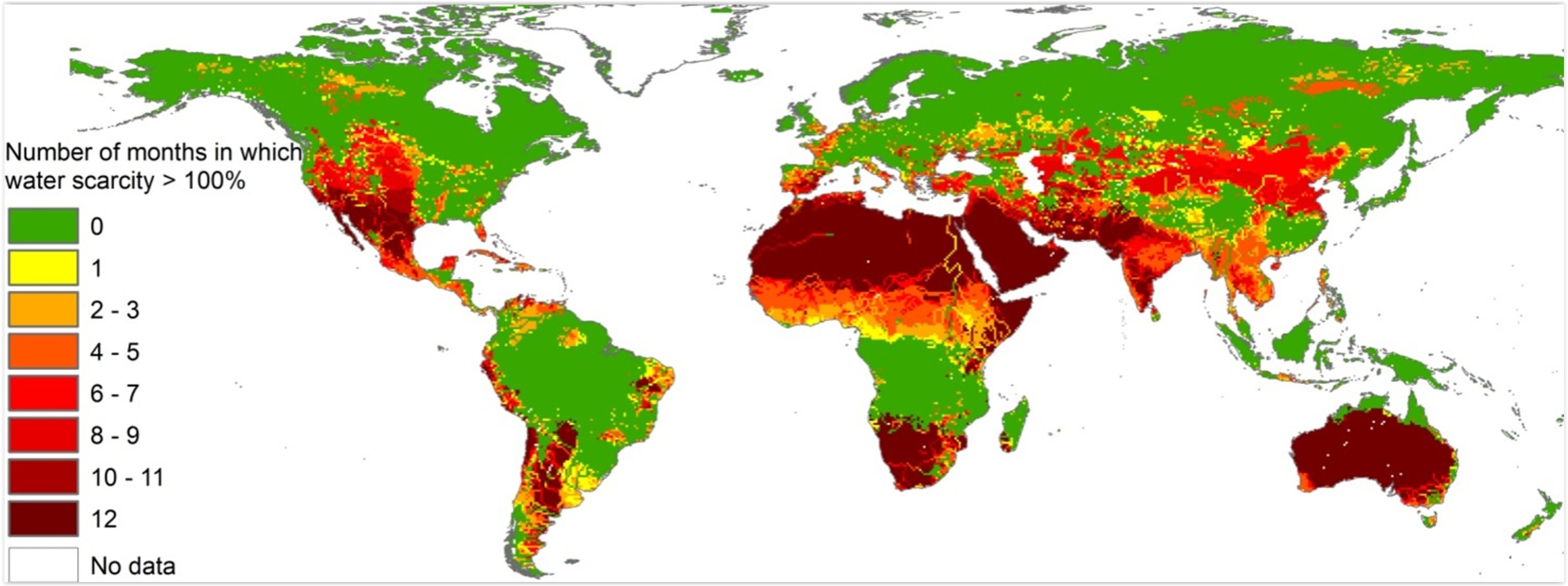 4 Billion People Face Severe Water Scarcity, New Research Finds
4 Billion People Face Severe Water Scarcity, New Research Finds. Water, not oil or natural gas, will be the most precious natural resource of the 21st century. Here's an excerpt at
The Guardian: "
At
least two-thirds of the global population, over 4 billion people, live
with severe water scarcity for at least one month every year, according
to a major new analysis. The revelation shows water shortages, one of
the most dangerous challenges the world faces, is far worse previously
than thought. The new research also reveals that 500m people live in
places where water consumption is double the amount replenished by rain
for the entire year, leaving them extremely vulnerable as underground
aquifers run down..."
7 Floating Homes Capture the Luxury and Squalor of Water Life. Rising sea level? No problem - if your home floats. Here's an excerpt from a story at
Business Insider: "
Dry
land might be the go-to spot to build a home, but that doesn't mean
it's the only option. From the stilt-supported shacks in Lagos, Nigeria,
to the luxurious underwater palaces bobbing in Dubai, floating homes
are the answer when solid ground is out of the question. Many use a
combination of concrete and styrofoam to prevent sinking but also to
stay safely in place when water levels rise. Here are some of the most
mind-blowing..."
Photo credit above:
Giancarlo Zema Design Group.
Fusion: "We're So Close We Can Taste It."
Yes, it would solve a global energy challenge and help us decarbonize
much faster. Is it close, a panacea or technological inevitability?
Here's an excerpf from
How We Get To Next at Medium: "...
I
think there are three options. One is solar — they’ve made marvelous
progress with solar, and solar would work if it comes down in cost and
we solve the energy storage problem. The second technology that could do
it would be advanced forms of fission, fast breeder reactors, etc., but
those come with a new set of risks and concerns that at the moment we
don’t want to address. And the third technology that can do it and
provide millions of years of sustainable, carbon-free, safe energy is
fusion. Of the three, fusion is probably the most attractive, in that
fusion doesn’t take up much space, it’s safe, it doesn’t produce any
waste that is significant, and we’ve got tens of millions of years of
the simplest of fusion reactions..."
Photo credit: "
Interior of the nuclear fusion reactor JET." Photo:
EFDA.
Americans May Think They'll Never, Ever Buy Electric SUVs or Pickups - But They Will. It's coming, and sooner than you might think. Here's an excerpt from
Quartz: "...
Such
motorists may be surprised to hear that, when they go to replace their
current vehicles in a few years, they’ll probably drive away in
electrified SUVs and trucks. It’s not because they necessarily want
them, nor even that automakers want to make them—after all, major car
companies earned more than $50 billion in collective profit last year, a
significant share of it from gas guzzlers. Perversely, the reason is
the opposite—Americans love their big cars so much, they’ll have no
choice but to go electric, experts say..."
Photo credit above: "Texas in the 2020s." (Mitsubishi).
 Electric Vehicles Will Triumph Because They're Better, GM Veteran Says
Electric Vehicles Will Triumph Because They're Better, GM Veteran Says. Here's an excerpt from
Forbes: "...
Set
aside all the motivations with climate change, oil dependence—it’s just
a better way to do a car. It’s simple.” Electric vehicle sales have been tepid
and may remain tepid in the short term. Internal combustion engines
will continue to dominate until 2025, Burns predicted, as the nation’s
automotive fleet slowly turns over. “It’s just arithmetic.” But as
automakers strive to meet the 2025 fuel economy standard—54.5 miles per
gallon—they will come to realize that reengineering traditional
vehicles is more expensive and difficult than adopting an electric drive
train that emits no carbon..."
Only Thing Worse Than Oil? Oil Funds.
The Wall Street Journal reports; here's the intro: "
One of the few assets performing worse than oil is a set of products used to bet on it. The $3.86 billion United States Oil Fund
LP, an exchange-traded fund that goes by the ticker USO, is down 22% so
far this year, while the $575 million iPath S&P GSCI Crude Oil
Total Return Index exchange-traded note, known as OIL, is down 26% in
that period. In comparison, U.S. crude-oil futures for March delivery
settled at $29.64 a barrel on Friday, down 20% this year..."
Postcards From The Astronaut's Lounge. Why are Bezos, Musk and Branson so obsessed with The Great Beyond?
WIRED has a revealing story; here's the intro: "
Space.
It’s a funny thing. Kubrick knew that. Because if you start a story
with apes, how can it not be funny? Then again, doesn’t everything
that’s about humans start with apes? Here’s the funny thing about space:
Ask people what they think about it and you’ll get every kind of
answer. We should colonize Mars! We should stay home! We should look for
life! Space, really, is a giant Rorschach. Into it we send rockets and
satellites and space stations. But more than that, we send beliefs.
About what is meaningful. About what is possible. About what is
inescapable..."
Newsonomics: The Financialization of News is Dimming The Lights of The Local Press. Ken Doctor has a long and intriguing essay at
NiemanLab about the struggle to develop new platforms and business models to support a digital-first strategy; here's an excerpt: "...
There’s
no easily assembled formula yet, but the parts of it have become
clearer over the past several years. It is those national/global players
that have begun to master new disciplines in this new age of AMP, Arc and analytics.
Why? Certainly, it’s easier for them to take advantage of digital’s
natural opportunities for scale. They also increasingly put data science
(which leads to audience knowledge and development) at or near the
centers of their business. That leads them to intelligent
experimentation with the platforms of the moment (Facebook, Apple,
Google, Snapchat) while local media hardly play (“As giant platforms rise, local news is getting crushed”)..."
Wireless: The Next Generation. 5G is coming. Can you hear me now? Here's an excerpt of what we might expect from
The Economist: "...
The
advent of 5G is likely to bring another splurge of investment, just as
orders for 4G equipment are peaking. The goal is to be able to offer
users no less than the “perception of infinite capacity”, says Rahim
Tafazolli, director of the 5G Innovation Centre at the University of
Surrey. Rare will be the device that is not wirelessly connected, from
self-driving cars and drones to the sensors, industrial machines and
household appliances that together constitute the “internet of things”
(IoT)..."
Scientists' New Depressing Discovery About the Brain. Ideology trumps cognition, reasoning and basic math? I have to admit I'm shocked. Here's an excert from
Salon: "...
Kahan
conducted some ingenious experiments about the impact of political
passion on people’s ability to think clearly. His conclusion, in
Mooney’s words: partisanship “can even undermine our very basic
reasoning skills…. [People] who are otherwise very good at math may
totally flunk a problem that they would otherwise probably be able to
solve, simply because giving the right answer goes against their
political beliefs.” In other words, say goodnight to the dream that
education, journalism, scientific evidence, media literacy or reason can
provide the tools and information that people need in order to make
good decisions..."
From Georgia to Maine: What I Learned on a 6-Month Hike Along the Appalachian Trail. Here's an excerpt of an interesting and vaguely terrifying tale at
The Washington Post: "...
The
scariest moment on the trail was not, as many people often guess,
bear-related. Rather, it was the weather. Team Pie, with the temporary
addition of a real-life friend named Gary, was headed over Kinsman
Mountain in the White Mountains of New Hampshire. The August weather was
stunning — just a bit chilly, bright with sunshine. The weather report
had said that there was a chance of rain later..."
Photo credit above: "
Knock in the Great Smoky Mountains National Park after a snowstorm." (Clif Reeder for The Washington Post)
Coming To a Restaurant Near You?
A restaurant in France is taking the art of fine dining to the next
level. Not with fine food but with a projection system that keeps you
entertained and enthused while you're waiting for the food to arrive.
Click on the
YouTube link for one of the more amazing videos you'll ever see.
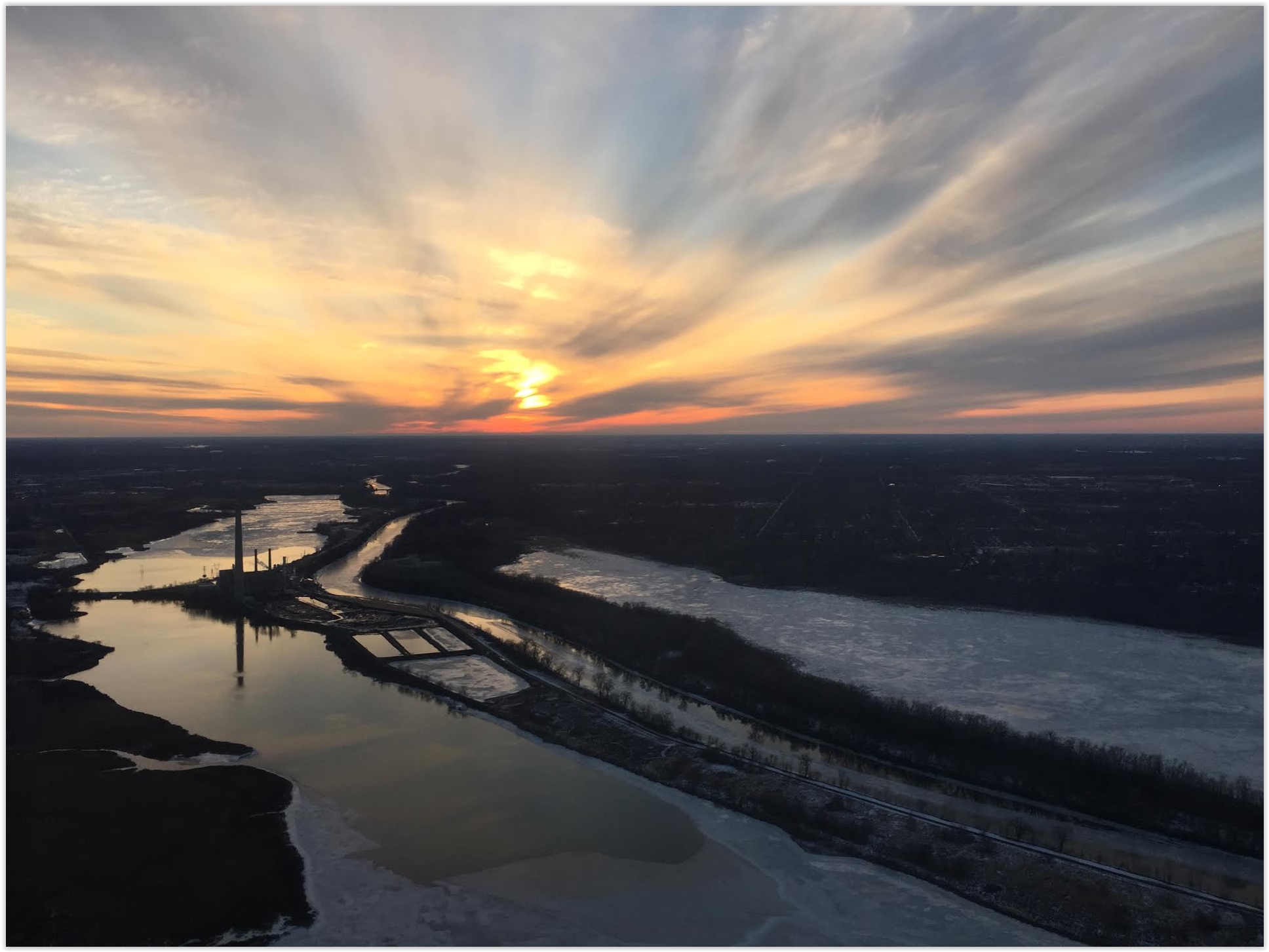 TODAY
TODAY: Cooler, few flurries. Winds: NW 8-13. High: 36
SUNDAY NIGHT: Patchy clouds. Low: 24
MONDAY: Mostly cloudy, above average temperatures. Winds: S 8-13. High: 35
TUESDAY: Overcast, light mix possible. Wake-up: 27. High: 37
WEDNESDAY: Partly sunny, seasonably cool. Wake-up: 24. High: 34
THURSDAY: Colder wind, few flakes in the air. Winds: NW 15-25. Wake-up: 27. High: 31
FRIDAY: More clouds than sun, brisk. Winds: W 8-13. Wake-up: 19. High: near 30
SATURDAY: Some sun, another taste of March. Winds: NW 8-13. Wake-up: 28. High: 41
Climate Stories....
January 2016 Shattered the Global Warming Monthly Record. Symptoms of El Nino, and background warming which continues to accelerate. Here's an excerpt from
Newsweek: "
The
global temperature anomaly for January 2016 was 1.13° Celsius. That
makes it the hottest January on record (the previous record was 0.95° C
in 2007). But there’s more: 1.13° is the largest anomaly for any month
since records began in 1880. There have only been monthly anomalies
greater than 1°C three times before in recorded history, and those three
were all from last year. The farther back in the past you go, the lower
the anomalies are on average. Yes, the world is getting hotter..."
Earth Kicks Off 2016 With the Most Abnormally Warm Month Ever Measured. This
is more than El Nino. El Nino is standing on your tip-toes at the top
of a flight of steps. Many are forgetting about the flight of stairs
we're going up. Here's an excerpt at
Slate: "
It would be hard to top 2015—a year unlike any other in human history—but 2016 seems to be giving it a shot. According to the latest data from NASA,
issued over the weekend, January was the planet's most unusually warm
month since we started measuring temperature in 1880. No other month in
the preceding 1,633 months has deviated this far from what was once
considered “normal.” Data independently produced by Japan’s
Meteorological Agency confirmed that last month was the hottest January on record globally. Last month broke the all-time January record by the widest margin of any month on record,
a full one-third of a degree ahead of last year’s record pace. That
means the planet is already on track for an unprecedented third straight
year of record-setting temperatures..."
Image credit above: "
January 2016 was Earth's hottest month yet, with the most unusually warm temperatures concentrated in the Arctic." NASA.
Global Warming Crushes Records. Again. January warmth was extraordinary, as documented at
Bloomberg Business: "...
Results from the world’s top monitoring agencies vary slightly, but NASA, NOAA, and the Japan Meteorological Agency all agree that January was unprecedented. The
El Niño weather pattern that started last year produced some of the
hottest temperatures ever witnessed across great swaths of the
equatorial Pacific. By some measures, this
may now be considered the most extreme El Niño on record. It has
triggered powerful typhoons, spoiled harvests in Africa, and contributed
to vast fires in Indonesia..."
Catholic "Climate Cardinal" Says Florida Politicians Have Duty to Act. Here's the intro to a story at
The Miami Herald: "
Florida
politicians have a duty to address the perils of climate change even if
they don’t believe humans are hastening its grave consequences, Pope
Francis’ chief advisor on climate change said Friday. In an interview
with the Herald before addressing a conference on climate, nature and
society at St. Thomas University law school, Cardinal Peter Turkson
said, “Anybody running for public office who sees the life of the people
affected by climate-related disasters” needs to act. That, he said,
includes the state’s two Republican presidential contenders who remain
skeptical of the science tying climate change to increased carbon
emissions..." (File photo of Miami: Wikipedia).
Read more here: http://www.miamiherald.com/news/local/environment/article61387222.html#storylink=cpy
Zika Outbreak Could Be an Omen of the Global Warming Threat. Another coincidence? Is there a possible link? Here's an excerpt from
The New York Times: "
The global public health emergency involving deformed babies emerged in 2015, the hottest year
in the historical record, with an outbreak in Brazil of a disease
transmitted by heat-loving mosquitoes. Can that be a coincidence?
Scientists say it will take them years to figure that out, and pointed
to other factors that may have played a larger role in starting the
crisis. But these same experts added that the Zika epidemic, as well as
the related spread of a disease called dengue that is sickening as many
as 100 million people a year and killing thousands, should be
interpreted as warnings..."
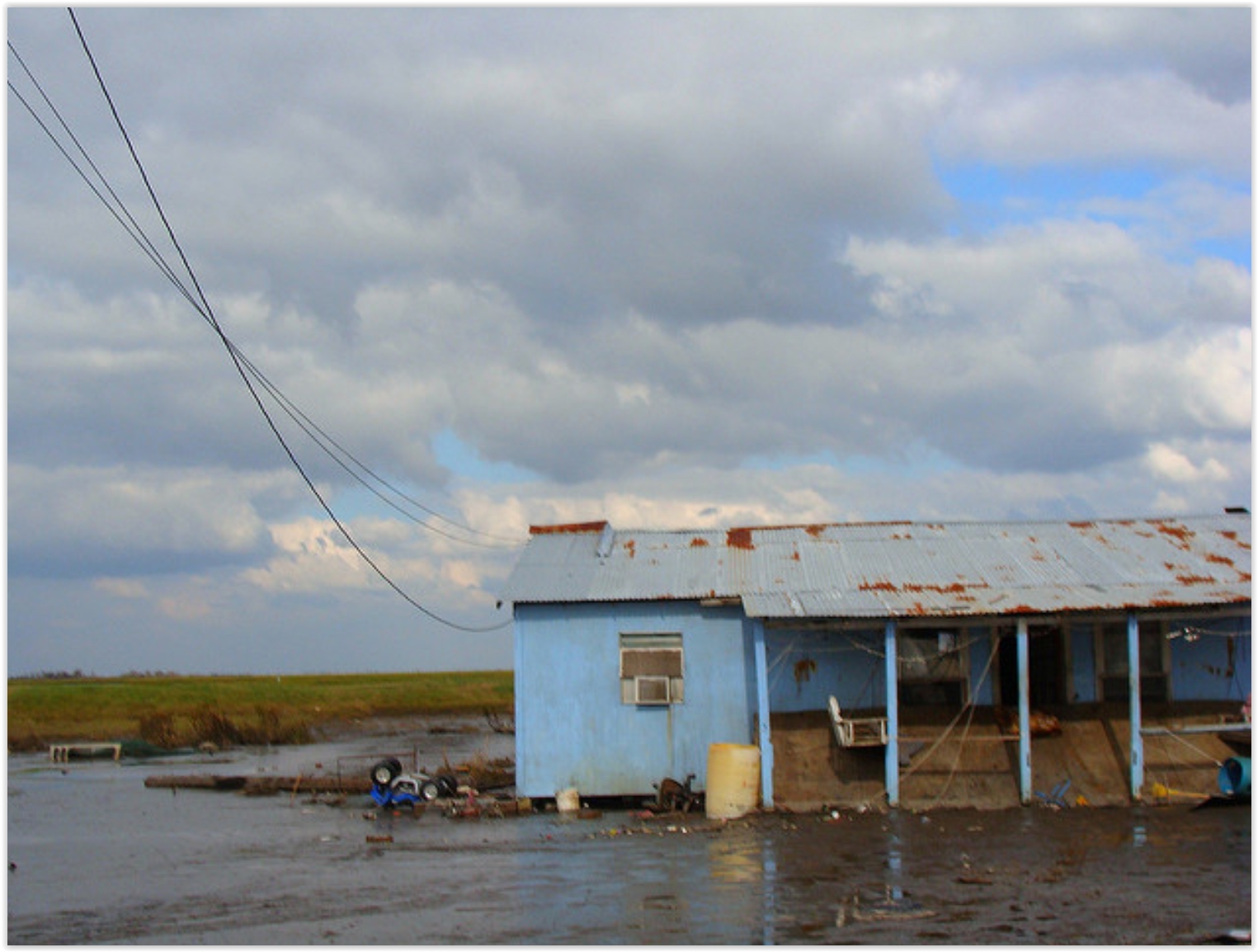 Meet the Continental U.S.'s First Official Climate Refugees
Meet the Continental U.S.'s First Official Climate Refugees.
People have already been dislocated from coastal sections of Alaska,
now it's showing up in Louisiana. Next up, Florida? Here's an excerpt
from
Atlas Obscura: "
A
slow-motion disaster is unfolding on the Isle de Jean Charles, deep in
the Louisiana bayou, where a group of residents just received $48
million in federal funding to relocate. These are the first official
climate refugees in the lower 48 states. The Biloxi-Chitimacha-Choctaw
Indians have lived in southern Louisiana for centuries, and, since 1880,
a band of them inhabited the Isle. But several factors, including
climate change, the Deepwater Horizon oil spill, and a series of
destructive hurricanes have meant that the Isle de Jean Charles has lost 98 percent of its land since 1955..."
Photo credit above: "
The Isle de Jean Charles after Hurricane Gustav in 2008." (Photo: Flickr/Karen Apricot).

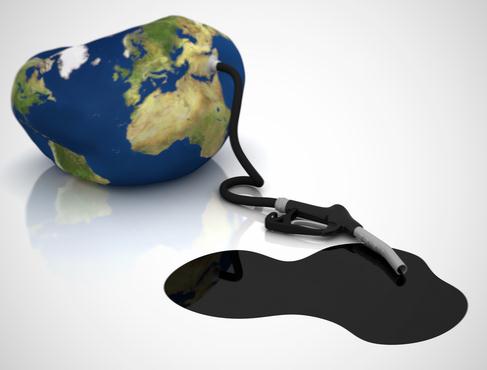

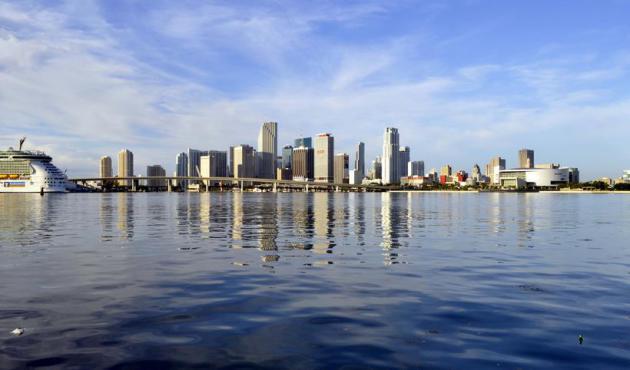
No comments:
Post a Comment